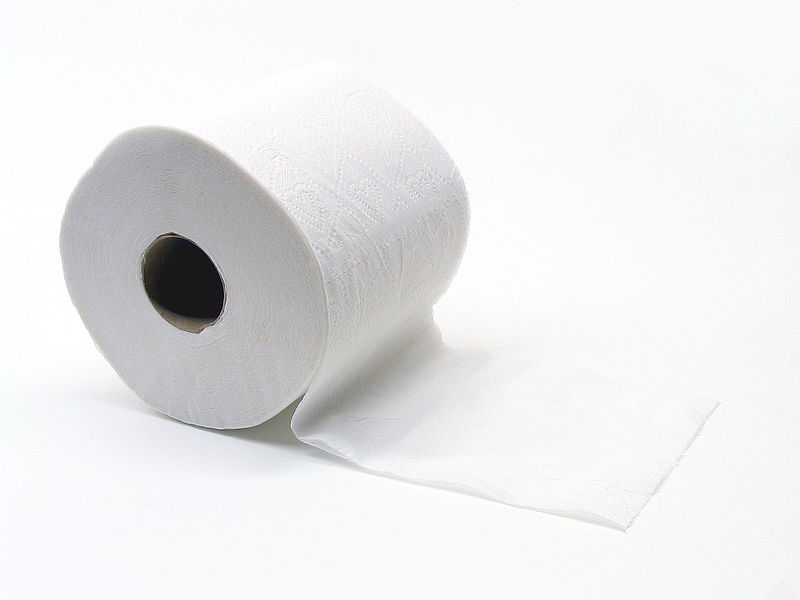 (412) 364-9114
(412) 364-9114

Probably the most common question about surrounding toilet paper is “Why is the color always white?”.
Well believe it or not this has not always been the case. In fact, colored toilet paper was first put on the market in the 1950’s and became popular in the 1970’s. Homeowners were attracted to this toilet paper because they could color coordinate their toilet paper with their bathrooms. Popular colors at the time were pink, blue, yellow, green, peach, and black. Unfortunately there were some unfortunate implications that caused the demise of colored toilet paper.
While most American producers have since halted production of colored TP, there are still some vendors like Renova who still sell it. Colored toilet paper is still prevalent in other countries, which leads us to our next part:
There seems to be no definitive answer in this question. One blogger simply attributes this to cultural preference. She writes:
Pink is just a regional preference, although I can’t find out who started the craze for this colour in France. The idea behind coloured toilet paper was to make it match the décor in the bathroom. I cannot believe for a moment that anyone would paint their smallest room Grotesque Pink so I’m not convinced that rule holds for France.
It’s a truly disturbing thought indeed. While missing toilet paper may be a mild inconvenience for us, this was a harsh reality for our not-so-lucky forefathers. Throughout the years, different cultures experimented with multiple substitutes and not too many of them are pleasant:
In fact, many countries today still don’t use toilet paper. Countries such as India only use water to cleanse themselves and view the use of toilet paper as an unsanitary practice.
Toilet paper is usually made from recyclable paper. The recycled paper is then mixed in with water to create a toilet paper “pulp”. To see the entire process, watch this video from the Discovery Channel:
We assume this questions gets asked because because most people probably don’t care what’s imprinted on their toilet paper. The majority of us would probably be fine using plain ol’ white toilet paper without any type of designs. However, we believe that these patterns are used for two things.
Having the designs on them is a way to make the toilet paper more aesthetically pleasing to the consumer. These patterns can be a way for the different toilet paper manufacturers to differentiate their brand and make their products seem more elegant and elite.
This topic may seem completely irrelevant to you. However, many people have extremely strong opinions about it believe it or not to the point where they are willing to rip each other’s heads off. In fact, the topic has even got it’s own Wikipedia article dedicated to it. If you don’t feel like reading the whole article, here are the advantages to each style:
After various surveys it’s been determined that 72% of people prefer “overhand” toilet paper. These people are also much more likely to notice the orientation at other people’s houses and adjust it.
How toilet paper dissolves is dependent on the length of it’s fibres. Facial tissues and wet wipes both contain longer fibres that increase their sturdiness but make it harder to dissolve. Toilet paper has shorter fibres so it is easier for it to break up when exposed to water.
Toilet paper is cut into squares to give the user consistent deviations of amounts that they wish to use. The perforations on these squares allow the user to easily tear off each square. And just in case you’re asking: it is possible to only use one square
Yes, toilet paper is in fact biodegradable. The wood pulp naturally breaks down overtime allowing it to leave zero traces in the environment.
Throughout the years toilet paper has developed a slew of different slang terms/euphemisms. Here are some of our favorites:
Although this may seem like an odd question, this question was actually brought to a Pittsburgh court due to a K-Mart accidentally charging 28 cents too much for a 12-pack of Angel Soft Tissue for a female homemaker. The fact is toilet IS NOT taxable PA and the lady won the case with $100 to show for it.
National Toilet Paper Day is celebrated on August 26th.
It’s a problem we’ve all had. You’ve just finished doing your business and you go to grab
your roll. However, when you look, there is no toilet paper to be found! Instead of panicking, try one of these methods next time this happens to you.
While it may be tempting to use wet wipes, remember that they are not an acceptable toilet paper substitute. They can cause damage to yours the the municipality’s plumbing systems.